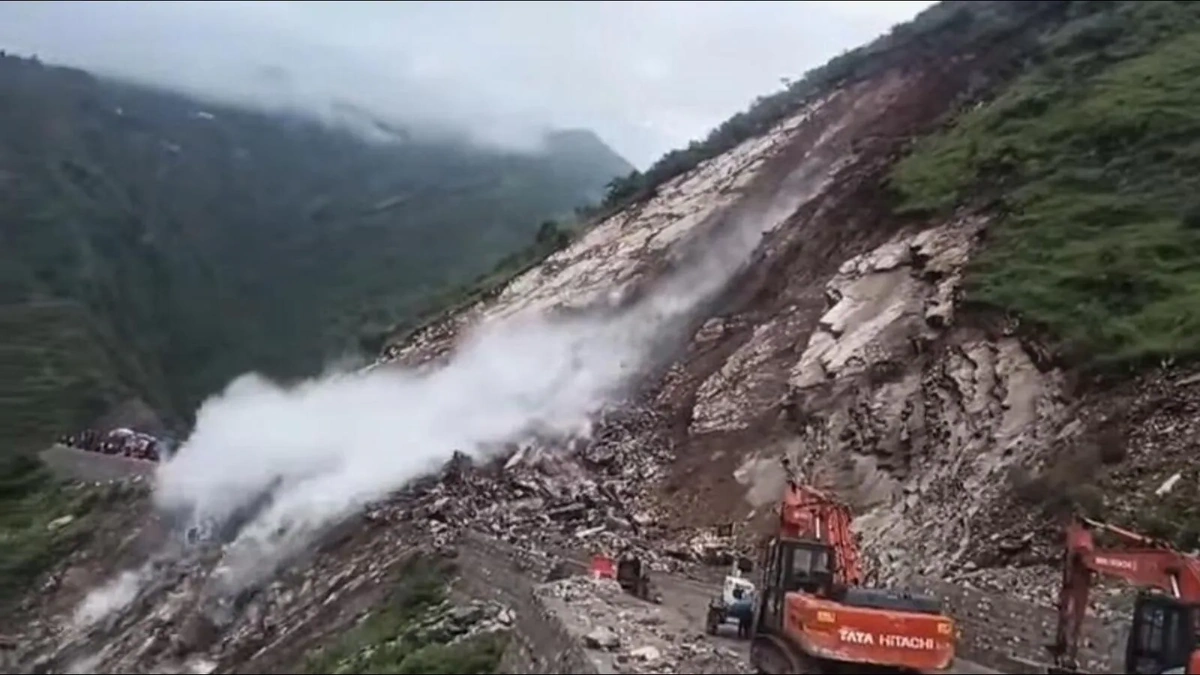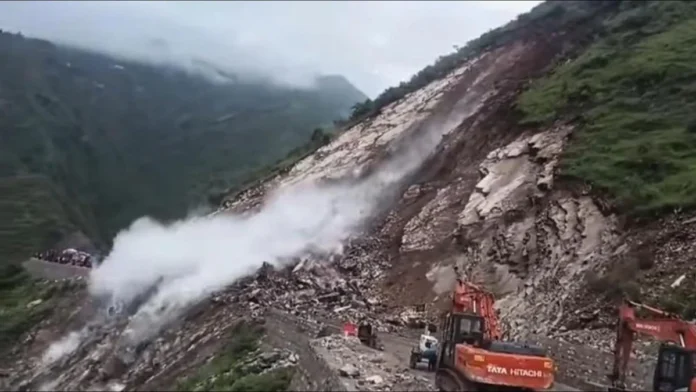The news hit like a punch to the gut: a devastating landslide in Himachal Pradesh, a bus caught in its path, lives tragically lost, and a desperate rescue operation unfolding. But beyond the headlines and the rapidly updating numbers, a deeper question gnaws: Why does this keep happening? What makes these seemingly idyllic mountains so vulnerable to such catastrophic events? Let’s be honest, it’s easy to scroll past, another disaster in a faraway place. But this one demands our attention, especially if you’re planning a trip to the hills – and even if you’re not. It’s a wake-up call about the delicate balance between development and nature, a balance we’re consistently failing to maintain.
The Mountains Are Speaking, But Are We Listening?

Here’s the thing: landslides aren’t random acts of nature. They’re often the consequence of human actions amplifying natural vulnerabilities. Himachal Pradesh, with its steep slopes and fragile geology, is inherently prone to such disasters. But add unchecked construction, deforestation, and poorly planned infrastructure, and you’ve got a recipe for disaster. Think of it like this: the mountains are sending us a message, a cry for help. The frequency of these natural disasters is alarming.
What fascinates me is the sheer scale of the problem. It’s not just about one ill-fated bus; it’s about the entire ecosystem teetering on the edge. According to experts, the increasing frequency of extreme weather events, fueled by climate change, is exacerbating the risk. More intense rainfall saturates the soil, making it heavier and more unstable. This, combined with the removal of trees that act as natural anchors, creates the perfect conditions for hillside collapse . A common mistake I see is viewing these events as isolated incidents, rather than symptoms of a much larger, systemic issue. The delicate Himalayan ecosystem is under immense pressure.
The Human Cost | Beyond the Statistics
It’s easy to get lost in the numbers – 15 dead, rescue operation ongoing. But behind each statistic is a story, a family shattered, a future extinguished. It’s a reminder that these disasters aren’t just abstract events; they have devastating real-world consequences. The emotional toll on the survivors and the families of the victims is unimaginable. We need to move beyond simply reporting the numbers and start focusing on the human cost of these tragedies.
But, here’s the harsh reality. Many of these deaths are preventable. Better planning, stricter regulations, and a greater awareness of the risks could significantly reduce the vulnerability of these communities. Let me rephrase that for clarity: we have a moral obligation to protect the lives of those living in these high-risk areas. The tragedyserves as a stark reminder. It’s time to prioritize safety over short-term economic gains. The relentless pursuit of development has come at a steep price.
How Can We Prevent Future Landslides? A Practical Guide
Okay, so we know why this is happening. But what can be done to prevent future tragedies? This is where it gets tricky, but also where there’s room for hope. Here’s a breakdown of actionable steps:
- Strengthening Infrastructure: Roads and buildings need to be constructed with the region’s unique geological challenges in mind. This means proper slope stabilization techniques, drainage systems, and regular monitoring.
- Reforestation and Afforestation: Planting trees, especially native species, can help bind the soil and reduce the risk of erosion.
- Stricter Regulations: Enforce stricter building codes and land-use regulations, preventing construction in high-risk zones. This is non-negotiable.
- Early Warning Systems: Invest in robust early warning systems that can detect potential landslide activity and alert communities in time for evacuation.
- Community Education: Educate local communities about the risks and how to prepare for and respond to natural disasters. Knowledge is power.
These steps, while not a magic bullet, can significantly reduce the risk of future landslides . The key is a holistic approach that combines scientific expertise, government action, and community participation. Speaking of communities, the recent meteor showerwas a reminder of nature’s beauty and power.
Climate Change and the Future of the Himalayas
Let’s be blunt: climate change is a major contributing factor to the increasing frequency of these natural disasters . As temperatures rise and rainfall patterns become more erratic, the risk of landslides will only continue to grow. Addressing climate change is no longer just an environmental issue; it’s a matter of survival for communities living in vulnerable regions like the Himalayas.
What fascinates me is how interconnected everything is. Our actions, even those seemingly far removed from the mountains, have a direct impact on the lives of those living there. Reducing our carbon footprint, promoting sustainable development, and investing in climate resilience are essential steps in protecting these communities and preserving the delicate Himalayan ecosystem. Ignoring the issue is not an option. We need to act now, before it’s too late.
FAQ About Landslides in Himachal Pradesh
FAQ
What causes landslides in Himachal Pradesh?
A combination of factors, including steep slopes, fragile geology, heavy rainfall, deforestation, and unchecked construction.
Are landslides becoming more frequent?
Yes, due to climate change and unsustainable development practices.
What can be done to prevent landslides?
Strengthening infrastructure, reforestation, stricter regulations, early warning systems, and community education.
How does climate change contribute to landslides?
Rising temperatures and erratic rainfall patterns increase the risk of soil saturation and erosion.
What can I do to help?
Support organizations working on disaster relief and sustainable development in the region. Advocate for policies that promote climate resilience and responsible land management.
Where can I find reliable information about landslide risks?
Consult government agencies, geological surveys, and reputable news sources for the latest information and advisories.
The Himachal Pradesh landslide is a tragedy, but it’s also an opportunity. An opportunity to learn, to reflect, and to act. It’s a reminder that we are not separate from nature, but deeply intertwined with it. Our choices have consequences, and it’s time we started making better ones. The future of the Himalayas, and the lives of those who call it home, depends on it.




